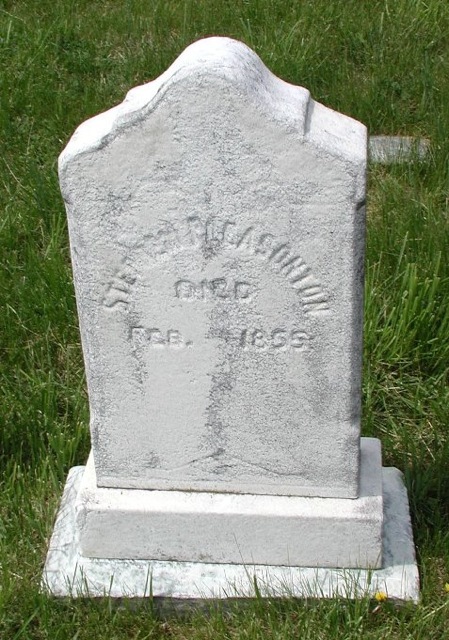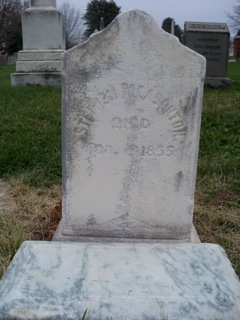
A PATRIOT TO REMEMBER
In the nick of time for the bicentennial of the War of 1812, the aging tombstone of the patriot who saved the Declaration of Independence and Constitution from inevitable destruction by invading British troops is once again legible and erect, a mile behind the U.S. Capitol.
Stephen Pleasonton was a lowly clerk in the State Department when he received a note scribbled by Secretary of State James Monroe, then on horseback spying on the British army’s advance on Washington, D.C., to save the precious national documents.
While Pleasonton gently placed the priceless materials into a linen bag, Secretary of War John Armstrong passed by and rebuked him for being an alarmist for thinking the enemy were on their way to the nation’s capital. Fortunately for future generations, Pleasonton was not intimidated and replied that it would be more prudent to try and protect them.
He loaded them onto carts, drove several miles north and put them into an abandoned mill. Then he had second thoughts. He was opposite the largest manufacturer of munitions in the country, certain to be targeted by the British. A spy or a turncoat could easily lead the enemy to his nearby hiding place. So he drove 35 miles west to Leesburg, Va., put them in an empty house, locked the door, gave the key to a local official, then fell asleep from exhaustion in a hotel.
That night the residents of Leesburg saw the fiery glow over the burning city of Washington as the occupying forces burned the White House, U.S. Capitol, Navy Yard and other public buildings. The following day they torched the State Department where the revered documents had been stored. Had Pleasonton knuckled under to the powerful Secretary of War, the documents would assuredly have been destroyed.
Thirty nine years later, Pleasonton feared he might lose his job as an auditor in the Treasury Department during the scramble for jobs from the incoming administration of President-elect Franklin Pierce, whom he did not know personally. In a letter to his friend, future President James Buchanan, Pleasonton outlined what he had done to save the documents of the Revolutionary government. He said he could have been rewarded with “many thousands of pounds†had he given them to the British. The letter survives in the Library of Congress.
I had visited Pleasonton’s grave numerous times, increasingly upset by the condition of this final resting place of a man who was of inestimable service to his country and successive generations. The headstone was at a sharp angle and his name barely decipherable. Cemetery officials told me it might cost $1000 to restore. At once I organized a fundraising walk from Capitol Hill to the White House, during which I told stories from my book, The Burning of Washington: The British Invasion of 1814, a selection of the History Book Club. As we stopped in front of the National Archives I told the group that the Declaration of Independence and the Constitution would not be there had it not been for the courage of Pleasonton in defying the Secretary of War and taking the documents out of the city.

Visitors to Congressional Cemetery may now stroll to Stephen Pleasonton’s grave and pay homage to the man whose patriotism has for so long been overlooked. Accumulated algae and dirt have been carefully brushed away and the lettering rinsed and sponged with cleaning agents that would not damage the original headstone. Recognition has finally been given to a man described by a contemporary as “honest and upright a gentleman as ever served the country.â€

Photos by Alan Davis.
 The posts are coming!
The posts are coming!


3 comments
Save them for his countrymen to destroy. Ironic?
[Reply]
Martin Reply:
December 21st, 2011 at 7:21 am
Ironic indeed, in light of some of the provisions in the recent National Defense Authorization Act.
[Reply]
Good story, thanks.
[Reply]
Leave a Comment